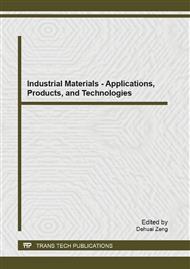p.628
p.632
p.636
p.640
p.647
p.653
p.657
p.665
p.669
Research on the Fractal Interpolation Based on High Speed Milling
Abstract:
Lots of literatures indicate that the residual surface machined is not smooth and has fractal characteristics of self-similarity and self-affinity. So it is proposed that the residue model of mould can be expressed by the fractal interpolation. Firstly, fractal function and factor are selected rationally. Secondly, the number of iterations is discussed considering the acceleration, deceleration and error in the high speed milling as well. S type feed curve limiting variation is adopted to control the minimum distance of adjacent interpolation points. Meanwhile, the angle of the adjacent line is calculated to control the error. At last, the fractal interpolation process is given and the interpolation points are calculated. Those points meet the above demands and are taken as the appropriate datum for the finish machining.
Info:
Periodical:
Pages:
647-652
Citation:
Online since:
August 2013
Authors:
Price:
Сopyright:
© 2013 Trans Tech Publications Ltd. All Rights Reserved
Share:
Citation:


